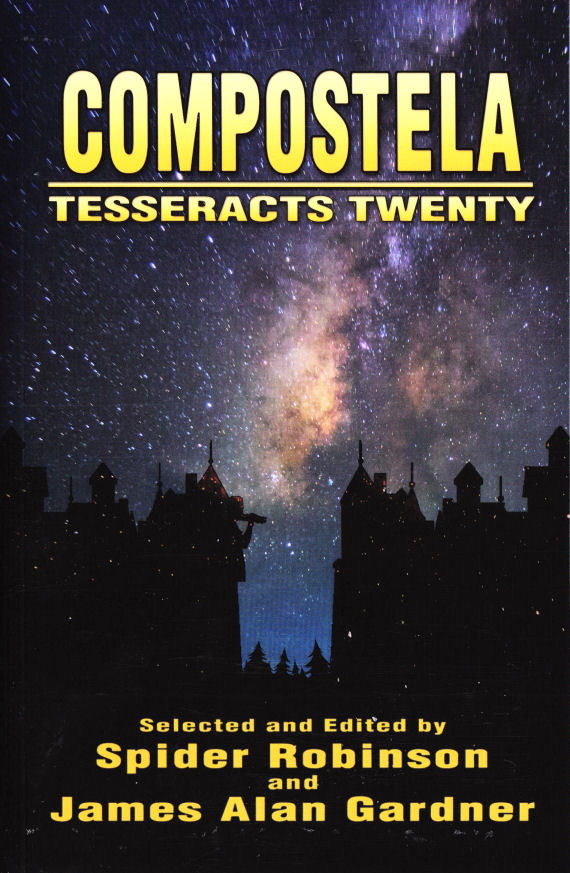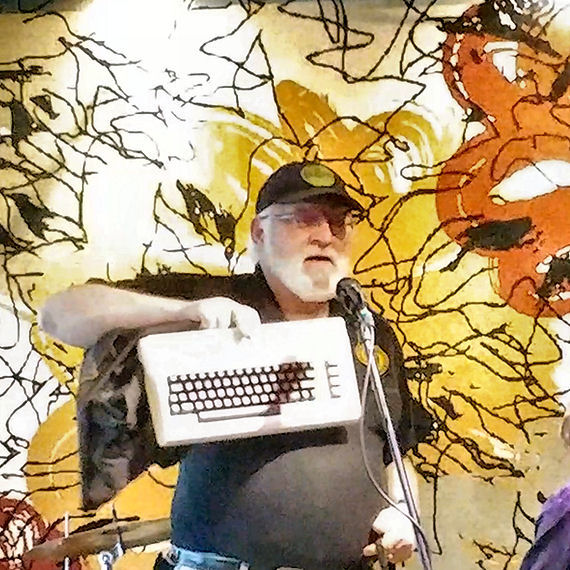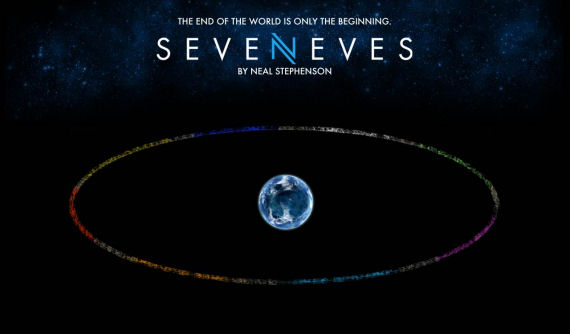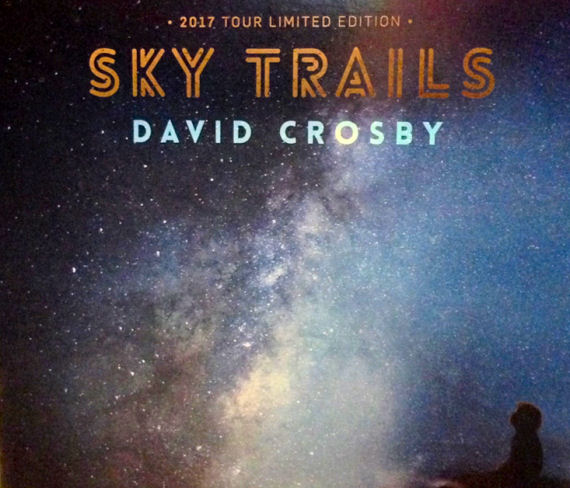
Hey! Somebody bake me a cake—this is column #200! Okay, they haven’t been strictly weekly; I’ve had to take the occasional week off, but that’s not a bad record, I think. (Sound of hand patting self on back…) This is about four years’ worth, more or less, of my reviews and comments on various SFnal items. And I intend to keep going for who knows how long. (This has pretty much taken over from my personal blog, which I haven’t updated for… four years.)
I also have a strong desire to get back to fiction writing, so from now on I may not be quite as “weekly” as before. I will be at least bi-monthly, but more likely three times a month. I need to learn how to do both fiction and non-fiction at the same time; right now it seems that it’s one or the other. I have two different writing modes and am having a tough time switching from one to the other. Maybe a more flexible schedule will help. But fret not (if indeed anyone’s fretting), I won’t be leaving Amazing Stories!

Speaking of writing (how’s that for a segué?), there’s a new Tesseracts out—this is the twentieth Tesseracts, and its name is Compostela, from EDGE Publishing. Tesseracts: Compostela is available in paperback from Amazon.ca, and in both paperback and Kindle format from Amazon.com. (For links, click on whichever Amazon you use.)
Compostela was edited jointly by Spider Robinson and James Alan Gardner, and includes stories and poetry by Alan Bao, John Bell, Chantal Boudreau, Leslie Brown, Tanya Bryan, J. R. Campbell, Eric Choi, David Clink, Paulo da Costa, Miki Dare, Robert Dawson, Linda DeMeulemeester, Steve Fahnestalk, Jacob Fletcher, Catherine Girczyc, R. Gregory, Mary-Jean Harris, Geoffrey Hart, Michaela Hiebert, Matthew Hughes, Guy Immega, Garnet Johnson-Koehn, Michael Johnstone, Cate McBride, Lisa Ann McLean, Rati Mehrotra, Derryl Murphy, Brent Nichols, Susan Pieters, Alexandra Renwick, Rhea Rose, Robert J. Sawyer, Thea van Diepen, and Nancy S. M. Waldman. (Did you catch that? My name somehow was snuck in there!) Figure 3 is me reading with my friend VIC, one of the subjects of my story.
About the title of this anthology: For more than 1,000 years, Santiago de Compostela (Compostela means “field of stars”) has attracted pilgrims to walk to the cathedral that holds St. James the apostle’s relics. The stories in this anthology in their own way tell the tale of futuristic travelers who journey into the dark outer (or inner) reaches of space, searching for their own connections to the past, present and future relics of their time.
For those of you unfamiliar with Tesseracts, it’s the longest-running Canadian SF/F anthology series, and the first one was edited by the late Judith Merril. Over the last 20 years, Tesseracts has featured some of the best in Canadian SF/F that has appeared anywhere, and I’m proud that I was able to be in the twentieth-anniversary issue. The Vancouver launch party was last Monday night, and I was able to see a number of my fellow Compostela authors there. For some, it was their first reading, and they were quite excited and fun to watch!

SF AND MUSIC: Because SF and music are both a very large part of my life, it occurred to me that there must be a number of professional musicians who like science fiction and fantasy (SF/F), and both music and writing are cross-cultural; that is, they influence each other. A good many songs have SF/F leanings where they’re not specifically SF or fantasy; how many songs (including The Byrds‘ “Mr. Spaceman”) specifically reference space or spacemen?
Songs like David Bowie’s “Space Oddity”; Neil Innes’s Bonzo Dog Doo Dah Band‘s “I’m the Urban Spaceman”; the Steve Miller Band’s “Space Cowboy”; Elton John’s “Rocket Man”; The Carpenters’ “Calling Occupants of Interplanetary Craft”—I’m sure you can think of more of them than I can. And many SF writers (and scientists) are profoundly influenced by music in their lives, too.

One such musician, whose influence in a lot of people’s lives (including mine), is David Crosby (Figure 4). He very graciously agreed to let me interview him via phone, about science fiction’s influence on his life and music. Any mistakes in transcribing this interview are mine alone. So here are the questions I asked David about SF and his music. It was recorded using an app on my Samsung phone, and the recording was very bad. It is thanks to longtime friend and ex-PESFAn Alden Hackmann, owner of Olympic Musical Instruments and Bracken Creek Graphics, that I was able to get anything resembling audibility out of much of the recording. So anything in brackets ][ is extrapolation, other information—or just plain guessing!
SF: I’m glad you agreed to do this with me; I appreciate it…
DC: Yeah, it’s a very interesting idea, that science fiction [inaudible] with music. There’s been a lot of it.
SF: Yes, pretty cross-cultural, in my opinion. And you’ve been responsible for some of it.
DC: Well, you know, there’ve been a couple of things that I really liked.
SF: Well, there’ve been a few things you’ve done that I really liked and that a whole lot of people really liked. Shall we get to the questions?
DC: Sure.
SF: How long have you been reading science fiction and/or fantasy? Have any SF/F writers been influential in your life, or specifically influenced your music?
DC: Yes. I’ve been reading science fiction ever since I was a kid. [For the record, Wikipedia says that David Crosby is 74.] A librarian in a place called Carpinteria, California, turned me on to Robert Heinlein, and that hooked me. I read every single one of Heinlein’s juveniles. All of them. Influenced me a lot because Robert was, you know, very didactic, always teaching something, expressing his view of the world and how things ought to be. So he influenced me a lot—influenced my thinking, probably my values, quite a bit.
SF: You and me both.
DC: Yeah, I think he did it to a lot of people. He was a natural spokesperson for his point of view, and he had a certain ability to make people think he was a great guy, in his writing. I never met him, but I would have liked to.
SF: Only met him once, but I had the opportunity to spend an hour or so with him and his wife, 35-40 years ago. It was very interesting to listen to him, but you didn’t talk with Heinlein, you listened.
DC: Yeah, I kind of figured that.
SF: Any fantasy writers influence you, like André Norton?
DC: Yes; you know, I’ve read various things, and uh, what’s his name, who wrote Fahrenheit 451?
SF: Ray Bradbury.
DC: Yes, Bradbury—is he fantasy, or is he science fiction? Where do you draw the line? Okay, The Hobbit was very clearly not science fiction. There’s a lot of stuff that’s in-between, you know… a writer like Steven [S.M.] Stirling, what he does is very realistic. But it’s full-out fantasy that he’s writing about. Most of his series, or all of them, it’s just like that; very realistic, so where do you draw the line?
SF: Oh, I agree with you, but I think the common definition of science fiction is that it’s things that are possible given our current knowledge of the laws of physics or, you know, extrapolation into the future; but fantasy is things that couldn’t possibly happen.
DC: Ah, but is that always the case? It doesn’t work if we encounter something that we don’t understand, and it seems like magic.
SF: Well, Arthur Clarke said that “any sufficiently advanced technology will be indistinguishable from magic.”
DC: Yeah! There you go, that’s what I was trying to say, but he said it better. I’ve read a bunch of guys, like… the guy who wrote the Foundation series, Asimov. And I’ve read lots of early science fiction; I’ve read as much as I could. Certainly not all science fiction, but science fiction is what I read more of than anything else. I do love historical novels, but I really love science fiction. You see, I have this thing in my head that that’s what the human race really should be doing, is growing up, and stopping beating each other over the head with rocks (ha!), and getting more adult; and going out into the universe and finding out who’s in the neighbourhood and learning everything they know!
SF: Oh, I agree with you one hundred percent. Are there any songs you’ve written that have a subtle or overt SF/F theme? There are obvious ones from bands you’ve been in; you probably had input or were credited on “Eight Miles High,” “Wooden Ships,” “Guinevere,” for example. So was any music you wrote specifically influenced by science fiction writers?
DC: Yes. How they influenced them was mostly through the ideas. With some of them I can… “Wooden Ships,” which I wrote with Paul Kantner*. That’s someone we should talk about, Paul Kantner. Paul Kantner was a total science fiction buff. God, he loved it; he read it all. He read it over and over and he wrote science fiction dealing with starships. He got that from the Robert Heinlein story about the Howard families. Kantner and I wrote “Wooden Ships,” which was a definite science fiction story, the “silver people on the shoreline” were wearing radiation suits.
SF: I was never sure if those were aliens or radiation suits or what.
DC: No, they were radiation suits. It’s a post-apocalyptic tale. Same with that song that I wrote with Paul, called “Have You Seen the Stars Tonight.”
SF: Sorry, I don’t know that one.
DC: Well, I really like that one. You know, when you’re trying to write about something, it’s very difficult to go straight at it. You can’t say, “Well, I’m gonna write about the Eiffel Tower; It’s a big, tall thing made of iron [Here the recording becomes inaudible, but David talks about how he and Kantner used imagery and the effect on people rather than a straight description of a starship; rather than saying “It’s a thousand feet tall,” they say, “looking down on the ground from “A” deck.]
SF: Going from science fiction to science, do you believe we’ll someday find life on other worlds—for example, in the Solar System on Europa, because it has liquid water—or even outside the solar system?

DC: Yes. I think there’s no question. We will. Look, have you seen the [Hubble] Deep Field photos [Figure 5], where the cameras were turned on a dark portion of the sky and exposed for a long time? You look at the picture and the picture looks like it’s thick with stars, but if you look closer, you realize that every one of those “stars” is a galaxy. Then you realize that each one of those galaxies has a million stars. Or more!
Now, I’m not a big law-abiding person; I broke the law a lot, but there’s one law I believe in, and that’s the law of averages. And the law of averages tells me that you can’t have that number of stars without having an appropriate number of planets, and that number of planets is in the trillions; and you can’t have that many times without some other life happening on those planets. Not possible.
It’s happened many times, many times. Now, since radiation is one of the main things that causes the mutations that make life evolve from single cells to intelligence, it’s probable that, nearer the centre of the galaxy, where radiation is higher because of the density; it’s very likely that, as we do—if we do—go out and move inward from the spiral arm—where we’re way out here—we’re more likely to run into other life. I guarantee it. The question is, do we run into benevolent life, or the other kind? I hope we run into benevolent people, because we can learn a whole lot from them: how the galaxy works and how to get around out there, and how to travel faster than light.
SF: I hope you’re right. What about the Fermi Paradox; the one that says that we should have already been contacted because of all the things you’ve just cited?
DC: Uh, I think we have! I think we have been contacted, but we’ve been quarantined. [here the noise overwhelms the signal—so some of this is reconstruction, but he talks about a group] “…of people somewhere, maybe [in the South Seas or the Amazon], that anthropologists have quarantined because of cross-cultural contamination. When they go in to study them, they dress the way they dress, they look and act like them, because they’re an anthropological treasure. They don’t want to drop a couple of thousand years of advancement on them.
We know what happens when an advanced culture contacts a primitive one, and the outcome is never good for the primitive culture. So I think that that’s what happened here. I think they came here, I think they looked around, and it’s entirely possible that some of the stuff they left here was meant to attract attention.
And I think maybe somebody was driving through somewhere in the area, and they landed; and either they look like us or could make themselves look like us, and I think maybe they stuck around for a while. I think they built pyramids in a lot of places, because it’s the thing that could present straight lines to the sky the most. And straight lines don’t happen in nature; they’re a way to attract attention from above. If you were here, if you were stranded, that’s what you would do.

I think they were here; I think that the ones on the plain in Nazca [inaudible] straight lines [inaudible].** I think that they have been here and we’ve been quarantined until we go through the, what I call the “jacks or better,” the openers for Galactic citizenship, which are a) you don’t kill everyone the first time you see them; and b), you get sophisticated enough to invent your own faster-than-light drive.
SF: Well, I hope that is possible, and I hope you’re right on that.
DC: Yeah, me too! I’ve got big hopes!
SF: By the way, before that photo of Deep Space was ever taken, Brian Aldiss published a book called Galaxies Like Grains of Sand. I’ve never forgotten that title.
DC: It’s inconceivable that there could be that many stars, that many [inaudible] of that many planets [inaudible].
SF: I hope so; I hope you’re absolutely right.
DC: I guarantee it. I believe in the Law of Averages!
SF: Besides the ones we’ve talked about, do you have any favourite science fiction books?
DC: Oh, dozens! I’m currently reading [inaudible], but my favourite one recently is Seveneves.
SF: I saw you mentioned that one to Spider, but I haven’t seen it myself.
DC: You should take a look; it’s an excellent, really brilliant science fiction book. Really, really excellent book; maybe the best one in recent years, or the best one in the last few years.

SF: According to Spider Robinson, you had input into or were partially responsible for Variable Star, the book he wrote from Robert Heinlein‘s notes. Have you ever thought of writing SF or fantasy stories or books?
DC: Yes, I have. I have a number of them in my head. Maybe science fiction stories, novels or screenplays, all a possibility. I have many stories in my head.
SF: I’d love to hear those, or see them! And screenplays—they’ve gotta be better than some of the stuff they’re putting onscreen these days!
DC: Oh, my God! Make the robot bigger! Blow it up!
SF: Yes, it’s all special effects and CGI—no plot, no character. It’s enough to drive you insane!
DC: I mean, it’s hard, man. And the bar is set so high since things like Close Encounters, and after that just these big [robot?] pictures, so childish; you just keep hoping they’ll produce something good, something thrilling. One good line, one good idea, and…junk.
SF: Did you see Arrival, with Amy Adams?
DC: Yeah, I thought that was pretty good! I loved the gravity. As soon as they mentioned the gravity changes in that tunnel, I said “Okay, okay, you got me!” I loved the creatures; I loved the creatures and I loved the communication.
SF: And it didn’t depend on explosions… or guns.
DC: No. It wasn’t as [???] I really like the ones that don’t depend on [battles?]. That’s why I like Star Trek better than Star Wars, because Star Trek was about going out and exploring, learning, not having a war.
SF: Part of that was just George Lucas never growing up [I snarked].
DC: [Several seconds of extremely noisy, inaudible recording]…but… spaceships and rayguns, woo-hoo! Love it!
SF: Well, Lucas was the first, of course, to make spaceships and futuristic stuff that looked used; you know, it wasn’t all shiny, brand-new [special-effects looking].
DC: Yeah, he made… they’re pretty good movies; it’s just that, philosophically, I like Star Trek better.
SF: Moving right along—are you aware of SF/F fandom; that is, fanzines, conventions and that sort of thing? Have you ever attended a convention?
DC: I know they exist. I’ve never been to one, but I think I’d probably like it. Probably a bunch of nutjob people, that I would like a lot.
SF: Well, it depends on the people; it’s like a microcosm of the “big” world, only with a science fiction “bent.” with good and bad people.
DC: …so there’s idiots and…
SF: Exactly. Would you consider attending a convention if you were invited as a Guest of Honour, for example?
DC: Yep. I would, yes.
SF: Okay, I’ll pass that along. If any [concom] reads this, they may be inspired to invite you. I don’t know if you’re aware of Leo and Diane Dillon, who were Harlan Ellison’s favourite artists, but we invited them to be Art Guests [of Honour] at our convention in Edmonton, and nobody had ever asked them to be guests before. For more than 30 years they’d been winning Hugos, and Newbery awards, and nobody had ever asked them [possibly because the concoms felt they were unattainable]. And they came and had a great time, so maybe someone will read this and ask you. That would be cool.
DC: Yeah!
SF: Is there anything you’d like to say to the aspiring science-fictional musical fan?
DC: Write [obscured] some science fiction music, dude! Write a science fiction song! I could try—I mean we have done it; The Byrds did write “Hey, Mr. Spaceman,” take me along, which is pretty up front—I know you’re out there, if you’re gonna come down here, please take me!
SF: And are you aware of filk? Filk songs? It started as a typo for “folk songs,” but filk became a much larger thing than it used to be. It started by taking well-known tunes and adding science-fictional lyrics to them; and now they write whole tunes and lyrics in science fiction and fantasy areas.
DC: Never heard of it, but it sounds interesting. If you can send me a link to some of it I’d be very interested.
SF: I will do that; I’ll get some of the best science-fictional filkers, because they’ve been going along doing this for years.
DC: Please do that, because I’m always interested [in that sort of thing].
SF: Have you read any of William Gibson’s stuff, David?
DC: All of it. I fell in love with William Gibson at Neuromancer. Or before that, with Burning Chrome or whatever. He’s one of the best writers in the world. I did at one point have his phone number, and he and I used to exchange faxes, back when faxes happened, before the internet. But I was thrilled with the guy, and he’s a fantastic writer. Did you read The Peripheral?
SF: Yes, I did.
DC: Woo-hoo!
SF: Yes, I agree. I’ll send you his phone number, as William Gibson and I have been friends for many years.
DC: Tell him I’ve read everything he’s ever written!
SF: I’ll tell him that. Okay, two questions remain. Number one: is there anything you’d like to be asked in an interview, but never have been? I assume this is about the two-billionth interview you’ve given.
DC: I wish… people would ask me more about my hopes for the human race, because I don’t get that [question very often].
SF: Well, I think you’ve pretty much spelled that out here. And I think people will respond to it, if you want my opinion.
DC: Could you do me a favour? When the interview is printed, could you put davidcrosby.com under my name, and also @thedavidcrosby, no caps, all one word [for Twitter, I assume] because I do answer questions.
SF: One last question—do you know any other well-known musicians who are into science fiction and who might be interested in doing this?
DC: No, but the one I would have given you was Paul Kantner. You know who Paul Kantner was, don’t you?
SF: Oh, yes, I used to live in The Haight—the Haight-Ashbury District in San Francisco in the late ‘60s. [I even went to a party pre-Grace Slick with members of the band, maybe including Paul Kantner (because my memory is fading with the years) on Alma Street. See the back cover of The Airplane’s Surrealistic Pillow LP for the address.]
DC: Then you know who Kantner was. He was a friend of mine, and we wrote together, and lived together, and liked each other a lot. He was a really terrific cat. But he’s not the only one; lots of people have written science fiction [music], but he wrote more than anybody else.

SF: Okay, thanks. Is there anything science-fictional on your new album [Sky Trails] that’s coming out?
DC: No, it’s mostly about people, and love, and occasionally taking shots at things like the United States Congress, because they’re really bad, and deserve every shot they can get!
SF: Thanks very much for agreeing to do this, David! I appreciate it, and since I’ve been a fan of your music for practically ever, I’m glad to have met you!
DC: And don’t forget to turn me on to anything [filk or science fiction] that’s really good! Thanks, Steve!
*Paul Kantner may be best known as one of the founders of Jefferson Airplane (pre-Grace Slick; their original female vocalist was Signe Anderson), which later became Jefferson Starship.
**As you probably know, the Nazca Lines in southern Peru are a group of pre-Columbian geoglyphs etched into the desert. They cover an area of nearly a thousand square kilometers; and there are around 300 different figures, including animals and plants. Some say that because they’re mostly only visible from the air, they must have been carved to be seen by alien astronauts; however, as I understand it, they’re also visible from nearby hills. So who knows? (Information not quite verbatim from Wikipedia.)
Any comments on this week’s column are welcome. You can register with Amazing (if you haven’t already registered), and comment here. Or you can comment on my Facebook page, or in the several Facebook groups where I publish a weekly link to this column. All comments are welcome—and don’t feel you have to agree with me to comment! My opinion is, as always, my own, and doesn’t necessarily reflect the views of Amazing Stories or its owners, editors, publishers or other columnists. See you next week!










